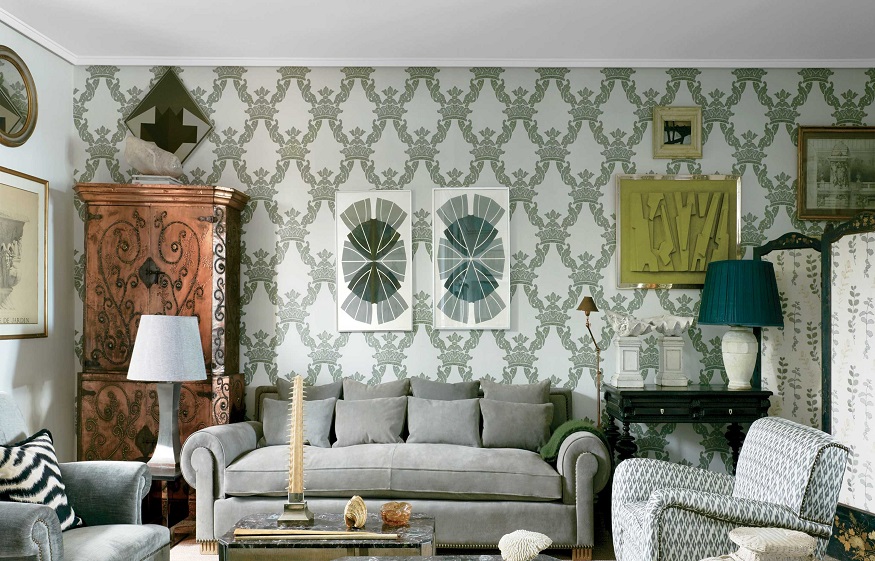Creating a clutter-free environment while delivering warmth and comfort is a simple way to outfit any home or work area with minimalist interior design. Aside from being able to know the types of upholstery fabrics minimalist approach to design has a number of common qualities.
Clean design
Clean design To achieve a clean design, the architecture is seen and accentuated. Flat, smooth surfaces, basic patterns, and intricate accents are common in the upholstery fabrics.
Neutral colors
The use of color is another important principle of minimalism. Using a basic color palette even for your upholstery fabrics, minimalism frequently uses several tones of the same hue. Accent colors are generally saturated colors, whereas soft or neutral shades dominate the remainder of the color pallet.
Adaptability
Minimalism emphasizes the most important aspects, cutting a room down to its bare essentials and offering only the items required to live comfortably in it. In order to achieve minimalism, space must be used wisely, which means focusing on functional furnishings, upholstery fabrics and fewer pieces of furniture.
Clean lines and lots of light
The minimalist style frequently offers open floor plans and lots of light, making your bedroom or living room feel bright and airy.
- Maintain a purposeful aesthetic. Every piece of furniture and upholstery fabrics serves a purpose, according to minimalist ideals, which emphasize function over flare. Your minimalist décor should be utilitarian and distraction-free, whether you prefer to accent exposed beams or basic window coverings.
- Decorate in a way that is meaningful to you. According to minimalism’s ideals, function takes precedence over flourish, which implies that all furniture and art has a specific purpose. Your minimalist décor should be utilitarian and free of distractions, whether you opt to accent exposed beams or simple window treatment.
- Choose upholstery fabrics that is acceptable. When choosing art for a minimalist environment, color, shape, size, and texture are all crucial factors to consider because they influence how a piece fits into your minimalist aesthetic. Overcluttering a wall can result from too many pieces of art, so decide if you want a few medium-size works or a single dramatic piece as the room’s centerpiece.
- Interiors can be made more appealing by using little accents. A minimalist room might have the appearance of being frigid and unwelcoming. Making a space feel cozier by adding tiny color touches or soft materials like wool and cotton. The purpose of a minimalist home is to decrease clutter and busyness while yet maintaining an inviting environment.
- Keep it simple. For your color scheme, choose neutral colors and tones. Incorporate contrasting hues to your upholstery fabrics without exceeding your core look to protect your spaces from becoming one-note.
- Allow for white space. Embracing your white space—the empty space between physical objects—can help you focus on your furniture and interior design. Create a perfect balance between the negative space and other features in the room by using your floor plan.
Helping You Deconstruct Your Space
- PRACTICAL
Keep an eye on how you live. What do you do on a daily basis? How do you engage with and navigate your surroundings? What items can you get rid of from your house? Understanding how you live in your home will help you figure out what changes you can make to attain a minimalist look and feel.
- EXERCISE YOURSELF
Organize a few photographs of minimalist homes that inspire you. To get started, take notice of the materials, upholstery fabrics, color palette, furniture design, and general atmosphere of the place.
- ONE ROOM AT A TIME
Decluttering an entire house is a huge undertaking, so instead of starting with every area, focus on one. Work your way through the house, finishing one room at a time.
- CHANGE YOUR FURNITURE
Because furniture occupies a significant percentage of your space, begin by editing the items in each area. Are there any goods that are merely collecting dust? Is it possible to replace a coffee table or credenza to provide more storage? Is your current furniture in keeping with your neutral color scheme?
- SURFACES MUST BE CLEAR
Take down the hook and carefully curate your artwork if you’ve hung stuff on the wall merely because it was there. Remove that stack of magazines from the floor, find a space for your pile of bills on the bench, and decrease the clutter of decorations on your mantel or sideboard, and the same applies for all of your surfaces.
- SELECT A HOME FOR EVERYTHING
In a minimalist home, nothing is out of place. Everything has a place to go and is cleaned up afterward. You should consider if you genuinely need a particular item if you can’t find a home for it. Remember to prioritize quality over quantity, and make sure you have plenty of storage for those items you can’t part with!
Keep your home minimalist
Our homes can become overwhelming over time. Once calm and welcoming, an interior can quickly become claustrophobic due to an accumulation of clutter and items you feel unable to part with. The tiny treasures of memories and daily objects we’ve accumulated over time fill our houses. The stuff in our interiors substantially dictates how we live and can have a habit of taking over, from Tupperware, upholstery fabrics and kitchen appliances to pictures and kid’s toys.



